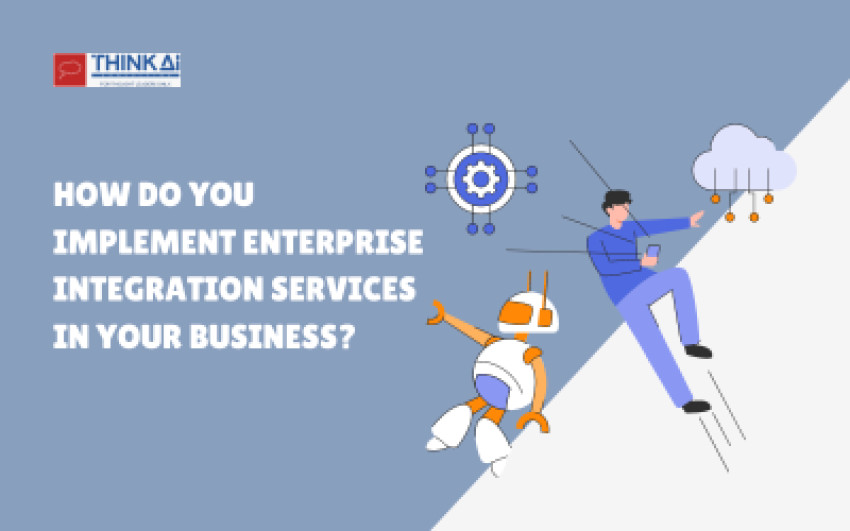
Enterprise integration services (EIS) mainly equip an organization to connect all its data in an IT landscape. Implementing enterprise integration services within a business has become extremely common. It allows organizations to conduct their business seamlessly and equips them to eradicate any inefficiencies within their productivity.
This article will highlight how to implement enterprise integration services in your business.
Clear definition of objectives
The first step you must take during the implementation of enterprise integration services is clearly defining the objectives you want to achieve. By defining the implementation’s purpose, you elevate your chances of success. This is because your workforce can understand why EIS is being implemented within the company. It will also allow you to set targets you want to achieve through the implementation process. This will also help you identify any data sources that must be integrated within the system. By defining your requirements clearly, you can function while considering security, compliance requirements, and scalability.
Evaluating the existing system
While implementing enterprise integration services helps you connect on an IT landscape, it is crucial to evaluate your existing system that is in place. This suggests that to determine the objectives that must be achieved through implementing enterprise integration services in your business; you must look into the existing system that is in place within your organization.
You must thoroughly assess your existing IT infrastructure, which will help you understand the various areas where you struggle. Furthermore, this assessment will also help you identify potential points of failure and areas of improvement. Also, with the help of this evaluation, you will be able to assess how your existing IT infrastructure differs from enterprise integration services. This will allow you to ensure that your implementation addresses all your limitations and successfully equips your business to flourish in its set purpose.
Developing a clear strategy
Implementing enterprise integration services depends solely upon enterprise integration strategy. You will have to focus on your enterprise integration strategy to implement it within your business successfully. To do so, you can rely upon the correct integration technology per your business’s needs. This can include enterprise service bus (ESB), middleware, integration platform as a service (iPaaS), APIs, etc.
By relying upon high-end technological tools, you efficiently increase your chances of implementing enterprise integration services. Furthermore, your strategy must also consider the service’s user interface, flexibility, and scalability to ensure that your workforce can operate seamlessly.
Seamless transformation
Another critical aspect of implementing enterprise integration services is ensuring you can seamlessly transform into a new IT landscape. To do so, you need to develop a data mapping strategy that will allow you to set up a smooth data flow between systems. In addition, you can rely upon data transformation processes that will enable you to convert the data formats and ensure that they function once the integration has been implemented.
Set up security
During the transformation process, it is evident that you will have a lot of confidential data out in the open. You must invest in a robust security system to protect all the personal data transferred during the integration process. You must also adhere to the industry regulations to maintain compliance. This will allow your transformation to be lawful and ensure that enterprise integration services are implemented efficiently.
Test, monitor, and maintain
Once the implementation has been conducted, you must test the integration workflows in a controlled environment. This would include testing for system responsiveness, data accuracy, and error handling. You can also perform integration testing in real-world scenarios you simulate. This must be followed by monitoring, where you monitor the performance of the integrated system with the help of monitoring tools.
You can then maintain it by addressing any issues you have found during your test run. Doing so will allow you to constantly update the integration system and ensure that it can support your business endeavors.
Workforce training and constant improvement
The final stage of your implementation process will include training your workforce. You must provide the necessary training to ensure your workforce can operate the enterprise integration services you have implemented. You can conduct specific workshops to help train your business’s IT staff to use the new integrated system.
Furthermore, you will also have to evaluate the performance of your workforce in alignment with the newly implemented enterprise integration services. This will allow you to assess your overall productivity and improve accordingly. By constantly improving through feedback and embracing high-end technologies, you elevate your chances of remaining relevant in your chosen industry and keeping up with the trends prevalent within the market.
Conclusion
To conclude, implementing enterprise integration services will elevate your business’s ability to function within its chosen industry. It will not only make data accessible but also eradicate any possibility of miscommunication between departments. Creating an enterprise integration strategy increases your chances of successfully implementing enterprise integration services within your business. By following the steps mentioned in this blog, you can successfully embrace it within your usual mode of conduction and earn lucratively from your market.




